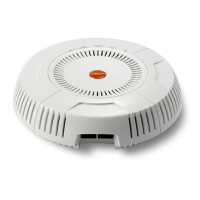Wireless Access Point
Configuring the Wireless AP 287
This option displays a login page (residing on the AP) instead of the first
user-requested URL. There is an upload function that allows you to
replace the default login page, if you wish. Please see “Web Page Redirect
(Captive Portal)” on page 421 for more information.
To set up internal login, set Server to Internal Login. Set HTTPS to On
for a secure login, or select Off to use HTTP. You may also customize the
login page with logo and background images and header and footer text.
See “Customizing an Internal Login or Splash page” on page 291.
The user name and password are obtained by the login page.
Authentication occurs according to your selection—PAP, CHAP, or
MS-CHAP. Note that if you select CHAP, then you cannot select Active
Directory in “Authentication Service Configuration” on page 296.
After authentication, the browser is redirected back to the captured URL.
If you want the user redirected to a specific landing page instead, enter its
address in Landing Page URL.
Internal Splash page
This option displays a splash page instead of the first user-requested
URL. The splash page files reside on the AP. Note that there is an upload
function that allows you to replace the default splash page, if you wish.
Please see “Web Page Redirect (Captive Portal)” on page 421 for more
information. You may also customize the splash page with logo and
background images and header and footer text. See “Customizing an
Internal Login or Splash page” on page 291.
To use an internal splash page, set Server to Internal Splash. Enter a
value in the Timeout field to define how many seconds the splash screen
is displayed before timing out, or select Never to prevent the page from
timing out automatically. After the splash page, the user is redirected to
the captured URL. If you want the user redirected to a specific landing
page instead, enter its address in Landing Page URL.
Both the Internal Login and External Login options of WPR perform
authentication using your configured RADIUS servers.

